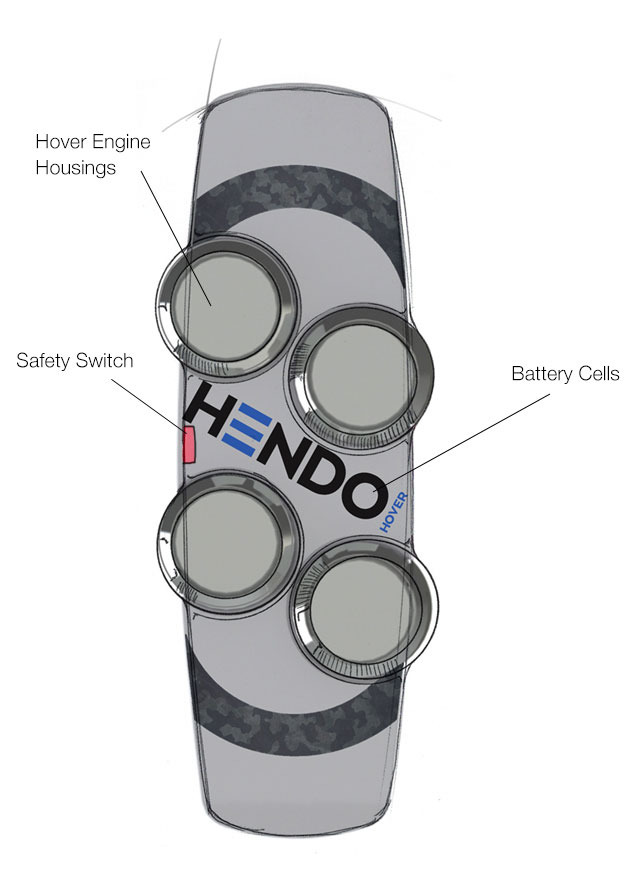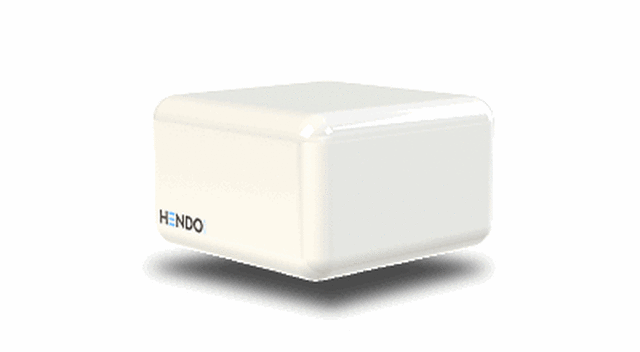The Hendo Hoverboard. Image via Hendo/Kickstarter
The technology to build hoverboards is here, and it could potentially be put to use to secure items – or even buildings – in earthquake-prone areas.
You heard me, McFly. Hoverboards are here and it’s not a hoax this time.
The Hendo Hoverboard floats just about one inch from the ground and the company behind it has demonstrated a real and working prototype with a number of tech journalists in the US.
But before Back to the Future fans get too excited, this technology is not accessible unless you have a spare US$10,000 to donate to Hendo’s Kickstarter campaign.
How Hendo’s hoverboard works using Lenz’s Law
Hendo hopes to crowdfund US$250,000 by 15 December to support the development of the technology powering this hoverboard, and is also offering a developer kit as a reward to put this technology into the hands of other innovators.
The finished Hendo board will start shipping a year from now and, by then, it’s also hoped Hendo will have built the facilities needed to use one.
You see, at this point, the hoverboards don’t work just anywhere. The four disc-shaped ‘hover engines’ on the underside of the board generate a magnetic field, pushing the board against itself and generating the lift needed to elevate it from the ground.

Image via Hendo/Kickstarter
This requires a surface of non-ferromagnetic conductive material underneath, such as sheets of copper or aluminium, though Hendo is working on new compounds and configurations to improve this situation.
It’s the same concept that keeps Maglev trains afloat in Shanghai, China, and applies a physics principle called Lenz’s law.
Lenz’s law explains how eddy currents are created when magnets are moved relative to a conductive material. In turn, these currents create an opposing magnetic field in the conductor, and Hendo has developed technology that focuses this field more efficiently.
Magnetic Field Architecture
Greg Henderson, CEO and co-founder of Hendo parent company Arx Pax and a visionary with a master’s in architecture, has trademarked and patented this technology, which is called Magnetic Field Architecture (MFA).
From the Kickstarter campaign, 20pc of funds will go towards general MFA research and development, while 30pc will be split evenly between acquiring lab space and engineers.
Henderson claims the underlying MFA technology is entirely scalable and so it can have really small or really big applications. Hoverboards, levitating developer kits and replica desktop hoverboards for crowdfunders are just the start.
In various industries, applications could range from robots gliding along a factory floor to precious items kept safe from harm in a museum.
Henderson envisions MFA being applied to the foundations of buildings as a protective measure against earthquakes and floods. This bold vision would mean, in the future, we could literally flip a switch to be safe from tectonic shifts or a forecasted deluge.
But, before that grand scheme is realised, Hendo needs to get started on crowdfunding R&D and building a community of developers working with this technology through the Whitebox developer kit, which comes equipped with a hover engine of its own.

The Hendo Whitebox developer kit, complete with hover engine. Image via Hendo/Kickstarter
Don’t miss our Innovation Ireland Forum on 24 October in the Guinness Storehouse, Dublin